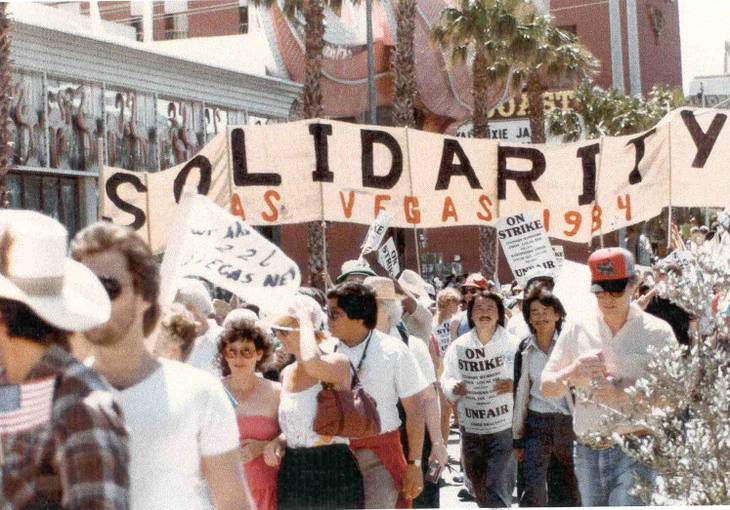Related content
The Culinary Union has had a reputation as the scrappiest labor union in town from nearly its inception.
Deservedly so. The union has organized several successful strikes.
With a four-day walkout in 1970, the Culinary quickly built a reputation as a union to be heard — members banding together to fight for worker rights in a city falling under a corporate umbrella.
In 1984, the Culinary launched one of the largest strikes in Las Vegas history, deploying more than 17,000 workers to protest 32 Strip resorts. Members picketed for nine months until 900 of them landed in jail and six casinos severed their ties with the union.
The collapsed relationships cost union members more than $70 million in lost wages and benefits, but the Culinary nevertheless inked contracts with 15 of the properties. Union officials labeled the strike a major victory in labor relations.
The Culinary hit the streets again in September 1991 to protest the Frontier. The strike turned into the longest in U.S. history. More than 500 workers held a 24-hour picket outside the casino for six years, four months and 10 days.
The strike finally ended Jan. 1, 1998, when Frontier officials invited most the employees back to work with new contracts. Some had to find jobs elsewhere.
The last two rounds of labor negotiations were less contentious.
In 2002, after a 10-day strike outside the Golden Gate, the Culinary settled its contracts in July. They had expired May 31.
In 2007, the Culinary settled with Caesars in June and MGM in August. Though there were no strikes, negotiations lasted more than a year.
The Tropicana was the last to settle with the Culinary — in August 2008.
